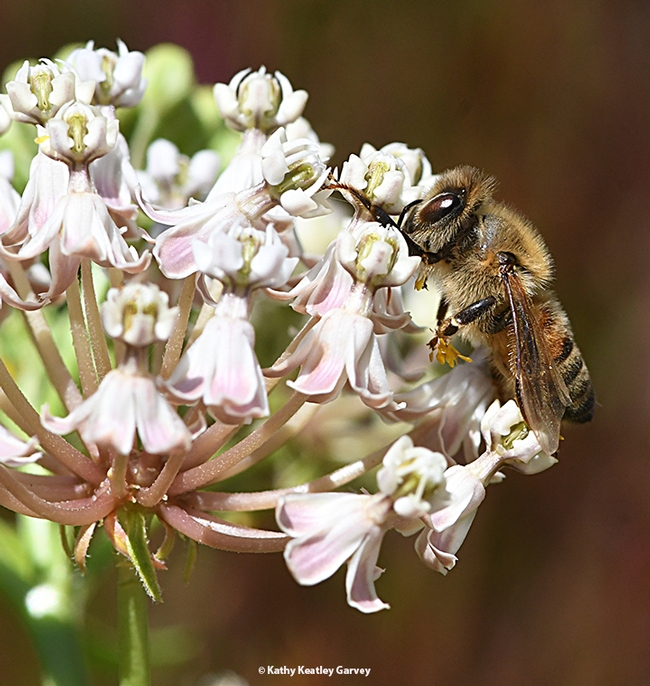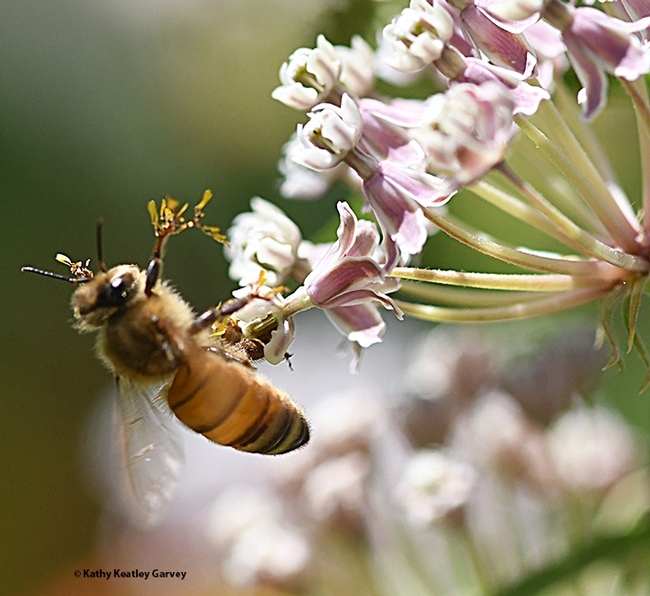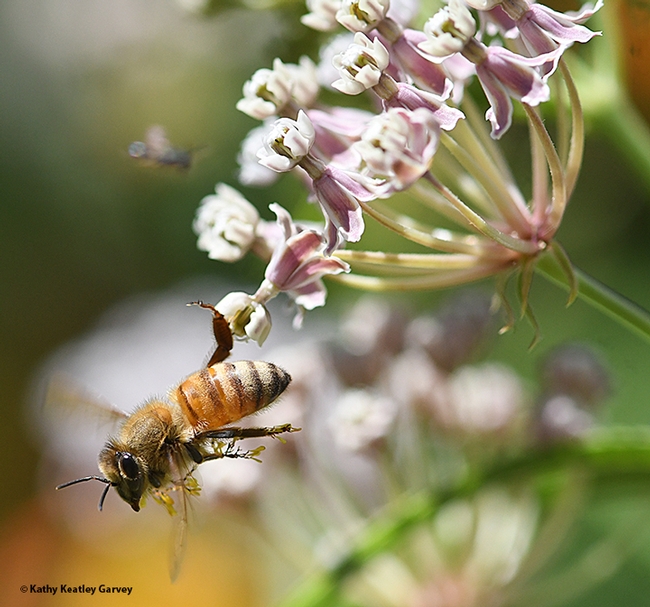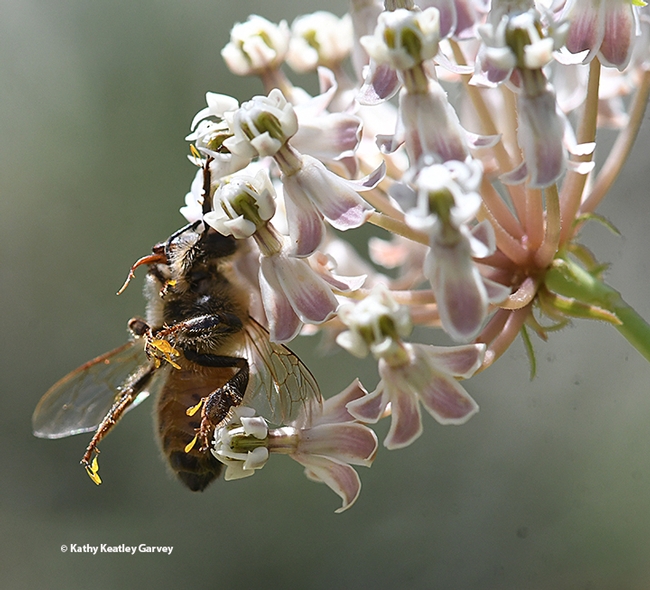- Author: Kathy Keatley Garvey
Hey, wait, take me with you!
No, leave me alone! Let me go!
Have you ever seen insects struggling to free themselves from the reproductive chamber of a milkweed blossom?
Instead of producing loose pollen grains, milkweeds produce pollinia, a waxy, sticky packet of golden pollen grains originating from a single anther. When bees and other insects forage for nectar in the "nectar troughs," where the pollinia are, they emerge with wishbone-shaped pollinia on their feet or other body parts. That is, if they emerge at all. Sometimes they die there; the reproductive chamber becomes a floral death trap.
What may seem like nature's appalling act of cruelty is actually a unique case of floral pollination, the transfer of pollina from one blossom to another.
"Milkweed flowers bloom in umbels which are clusters of individual flowers on stems that emerge from a common point," explains Eric Eldredge in an article published by the U.S. Department of Agriculture's Natural Resources Conservation Service. "Flowers of different species of milkweed differ in size, color, and fragrance, but all produce their pollen in waxy sacs called pollinia. The pollinia are located in two anther pouches adjacent to vertical stigmatic slits of the flowers. Pairs of adjacent pollinia are connected to each other by translator arms from a clamp located in the middle, called the corpusculum (Bookman, 1981). The complete structure is called a pollinarium."
"Insects that visit a flower to drink nectar struggle to grasp the slippery surfaces and may accidentally slip their leg, tarsus, mouthpart, or other appendage into the opening at the bottom of the stigmatic slit. This slit is formed by guide rails, which are lined with bristles that prevent the insect moving its appendage any direction but up. The top of the slit leads into the opening of the corpusculum, which has hard, sharp inside edges that taper together at the top. The corpusculum clamps firmly to the insect by pinching onto the insect's appendage. In its struggles to escape, if the insect is large enough, it can withdraw the paired pollinia from the anther pouches and fly away."
We've seen dead honey bees trapped in the milkweed blossoms while other bees forage around their carcasses. And then we've seen the frantic struggles (below). Fortunately this bee in the first three photos escaped. Another bee did not.
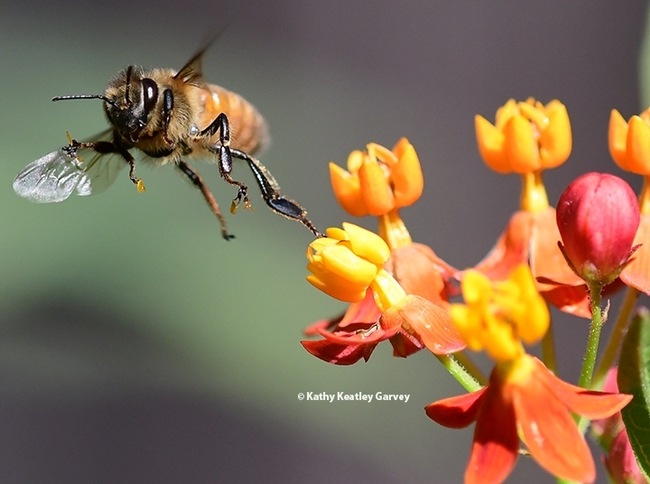
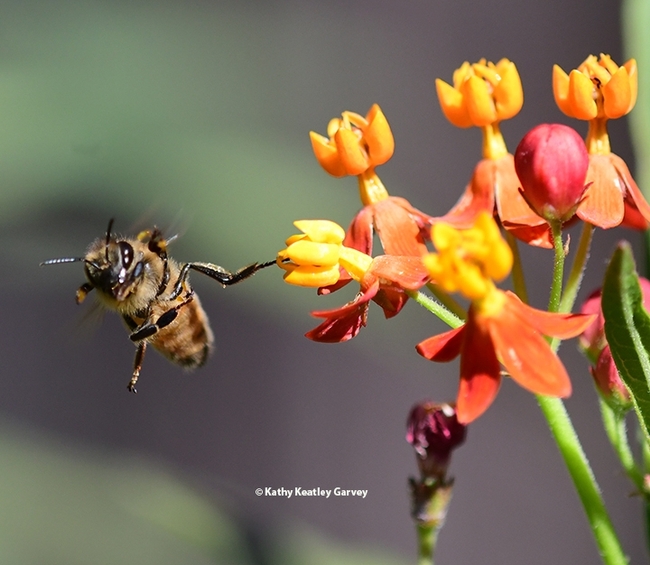
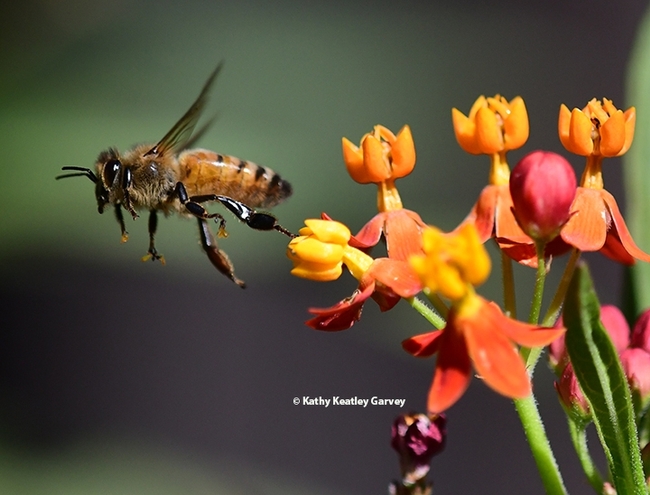
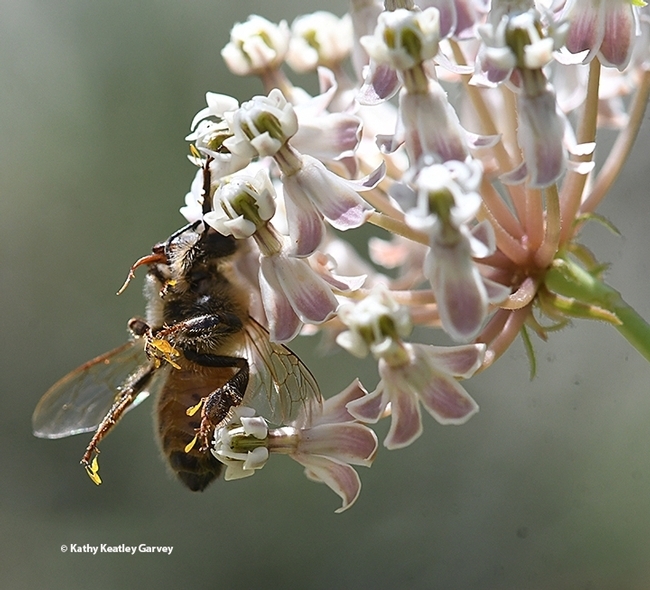
- Author: Kathy Keatley Garvey
It is not a "pretty sight," as Ernest Hemingway might have said, to see a honey bee stuck like glue--nature's "gorilla glue?"-in the reproductive chamber of a milkweed.
It's a trap, a floral trap.
If you've never seen this, this is how it works: milkweed produces pollinia, a sticky structure or packet of pollen grains originating from a single anther (male part). During the flower's complex pollination process, the mass is transferred as a single unit and looks like a yellow wishbone dangling on a honey bee's legs or other parts of her anatomy. It's a devious way for the milkweed to force insects to help them reproduce--in exchange for the sweet nectar reward. (Orchids produce pollinia, too.)
Oh, the nectar is so enticing! Honey bees (and other insects) literally make a bee-line for the it. They buzz and bump around as they await a vacancy. The scenario almost calls for crowd control or at least traffic lights.
But it's a trap, a floral trap. Sometimes you'll see frenzied bees struggling to free themselves from the sticky nectar trough. They are not always successful. Return to the scene of the grime and you'll see insect parts or whole insects trapped in the sticky mass. Dead.
The two honey bees below experienced different fates on this narrow-leafed milkweed, Asclepias fascicularis. One managed to free her leg from the grip of the milkweed reproductive chamber and return to her colony, complete with the precious nectar--and legs intact. The other did not. The meal was her last.
